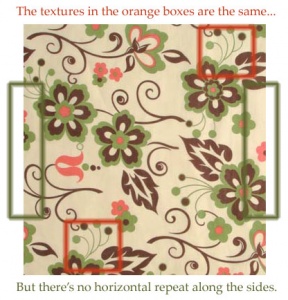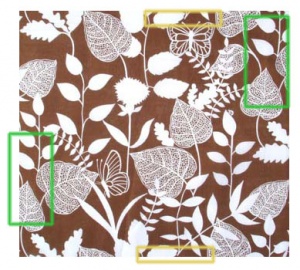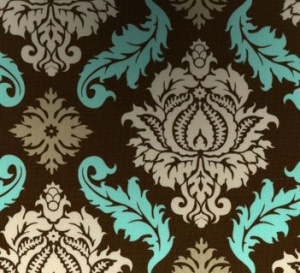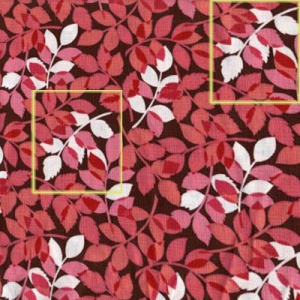Tutorials:Seamless Textures
This tutorial will explain the basic techniques for creating seamless textures from non-seamless images. This is a great technique for making wallpapers, floors, and fabrics for skinning - among other applications, of course.
Contents |
Finding the Right Source Image
Locating source images is always an interesting treasure hunt. The best place to start is Google - both Google Image Search and Google itself are great resources for finding source images. Finding exactly what you want can be tricky, but here's some tips:
- Try both Google and Google Image Search (GIS) for each of your searches. You may come up with nothing on one, and great stuff on the other.
- Be specific. "Wallpaper" will give you way too much stuff, but "damask wallpaper" or "striped wallpaper" may begin to give you some good hits.
- Try a variety of keywords, and just keep trying different variations. Try to think of different applications and things something might be called - "sweater" may not find you really usable pics, but "knit" and "knitted" may be better.
- If you find that you're getting a lot of good pics with a certain keyword in GIS, but they're all too small and far away, try adding the word "close" to your search. For example, if you were doing well with "damask fabric" but want more closeups try searching for "damask fabric close" instead.
- Think outside the box. Just because you're making wallpaper doesn't mean you can't use a fabric image as your source as long as it's appropriate in overall look.
- GIS is a great way to get an idea of what kind of images you'll be getting from a site - so if you notice one really good pic, go to the main site where the pic is located and see if they have more good stuff. You'll often find your best sites by stumbling across one image on GIS.
- Bookmark the best sites, with a descriptive name in your bookmarks (i.e. "Site Name - Really great retro fabrics!") and keep them in folders. Then you don't have to start searching from scratch for every project.
Repeats
First, and most importantly, you'll need a texture with at least one full repeat that you want to make seamless.
A repeat simply means that you have a full panel of texture, the whole thing, and aren't missing any parts. If your source image has part of a flower cropped off, and that flower doesn't appear again in the rest of the texture that same way, you aren't going to be able to make a seamless texture - you don't have a full repeat.
It'll take some skill and practice to identify a repeat, and even after you've been doing it a while, you may still find you've already got something halfway through editing to seamless before you realize you have a small hole that you don't have a repeat for.
For some textures, identifying a repeat is easy:
And for others, seeing that you don't have a full repeat can be a bit more tricky:
You want to make sure that you have both a horizontal and vertical repeat... and sometimes when you just barely have one with a complex pattern, seeing that there's a full repeat there is difficult:
Size
You also need to make sure you have source images that are big enough for what you're going to be using them for. For creating sims stuff, we have a bit of an advantage, as most of our textures are on a fairly small scale - you'll generally find yourself scaling things down, not up. If your source image is too small and you try to scale it up, it'll look blurry and crunchy and awful.
Quality
Again, being able to scale down for a lot of sim stuff can make this not as important as other applications, but if your source image is blurry and crunchy and weird, your textures will not come out looking too nice either.
Overall Even Tone
This one is VERY important for making any seamless texture. You need to have an even tone to the image - it can't get darker toward the top and lighter toward the bottom due to the way the person taking the picture was holding the camera, or the lighting, or suchlike. You need to be able to match up parts in the image, so it has to be nice and even overall.
Dark or light areas may take what would have been a pretty easy image to make seamless and make it really hard to do without a whole lot of extra work:
Skew
Your image should be as close to straight up and down as possible, with no skewed distortion. It's okay if it's rotated - but actual distortion like ripples, stretching of fabric, or strange perspective due to camera angle should be avoided as much as possible.
You can see in this image, corresponding areas of the pattern do not match in size and shape very well - this would be an extremely difficult images to make seamless as a result.




